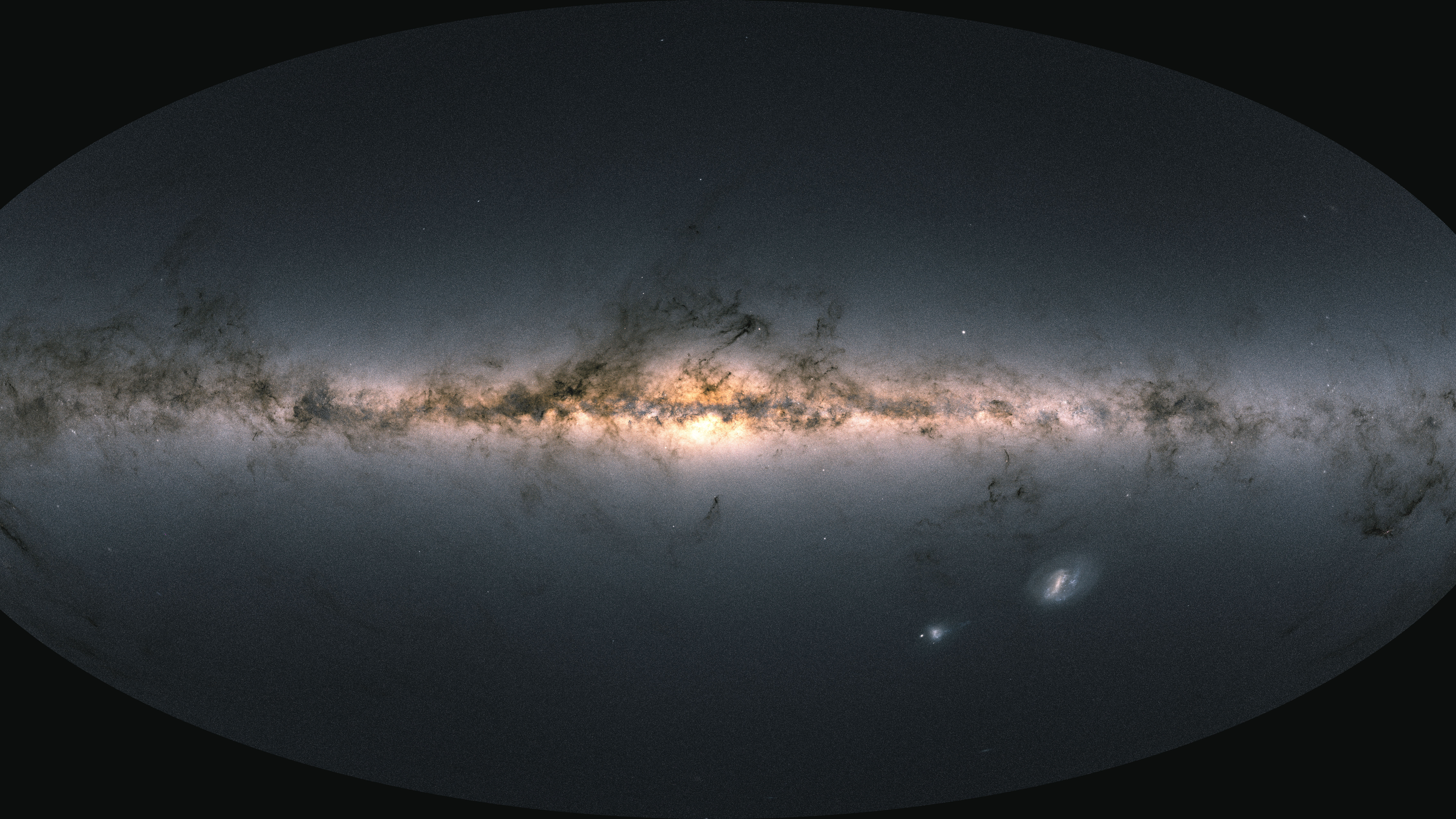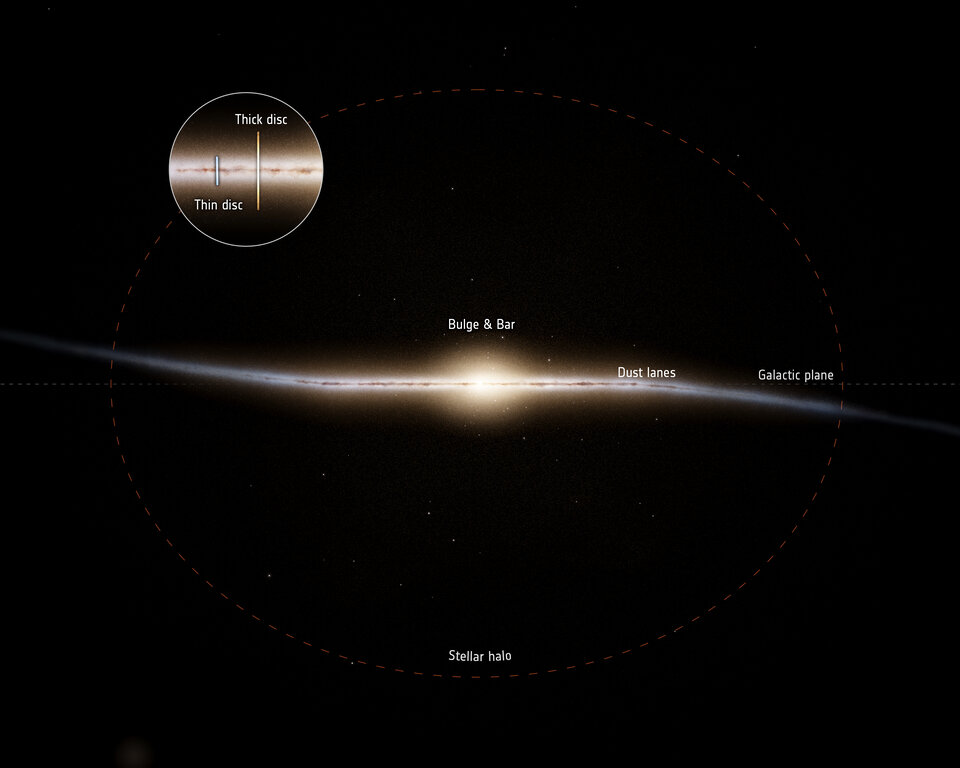
The Milky Way's thick disk is 2 billion years older than astronomers previously thought and likely formed barely 800 million years after the Big Bang, a new study based on an unusual type of star found.
Our galaxy can be split into two major parts: the thin disk, which holds the solar system and most of what we recognize as the Milky Way; and the much sparser, larger and older thick disk. To reconstruct the history of these components, a team of astronomers from the Max-Planck Institute for Astronomy in Heidelberg, Germany, looked at a population of stars in the Milky Way known as sub-giants.
Sub-giants are stars captured in the brief (in cosmic terms) period between their regular stellar life and the red giant phase, in which they expand far beyond their original envelope.
Related: Astronomers peer deeper into Milky Way's heart than ever before with new telescope images
Nuclear fusion at the cores of these stars has just stopped, but the stars haven't bloomed out into red giants yet. Since the sub-giant phase in a star's life only lasts a few million years, astronomers can pinpoint the age of these stars by comparing their chemical composition with computer models of stellar evolution.
In the new study, the scientists determined the ages of 250,000 sub-giants in the Milky Way using data from the European Space Agency's (ESA) Gaia mission and China's Large Sky Area Multi-Object Fiber Spectroscopic Telescope (LAMOST).
The data revealed that most of the star formation in the Milky Way's history happened in two distinct waves. The first wave, associated with the thick disk, started only 800 million years after the Big Bang, some 13 billion years ago, but accelerated 2 billion years later when the nascent Milky Way collided with another galaxy, which astronomers call Gaia-Sausage-Enceladus, ESA said in a statement.
Breaking space news, the latest updates on rocket launches, skywatching events and more!
This collision may have filled the thick disk as well as the stellar halo surrounding the entire galaxy with stars. It, however, took another 5 to 6 billions of years for the thin disk to emerge in the next big wave of star formation, which included the sun.
"Since the discovery of the ancient merger with Gaia-Sausage-Enceladus, in 2018, astronomers have suspected that the Milky Way was already there…but we didn’t have a clear picture of what that Milky Way looked like," Maosheng Xiang, an astronomer at the Max Planck Institute for Astronomy and one of the paper's authors, said in a statement published by the European Space Agency.
The study was published in the journal Nature on March 23.
Follow us on Twitter @Spacedotcom and on Facebook.

Rahul Rao is a graduate of New York University's SHERP and a freelance science writer, regularly covering physics, space, and infrastructure. His work has appeared in Gizmodo, Popular Science, Inverse, IEEE Spectrum, and Continuum. He enjoys riding trains for fun, and he has seen every surviving episode of Doctor Who. He holds a masters degree in science writing from New York University's Science, Health and Environmental Reporting Program (SHERP) and earned a bachelors degree from Vanderbilt University, where he studied English and physics.

